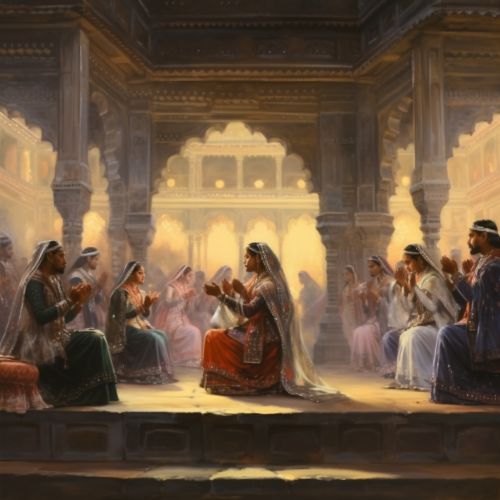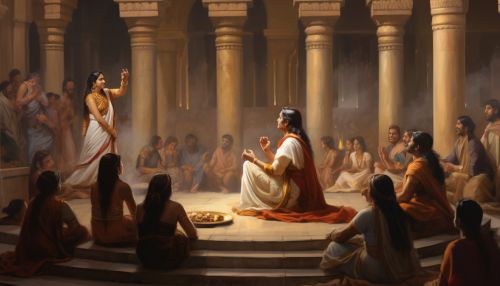Bhakti movement
Origins and Development
The Bhakti movement is a significant socio-religious revolution that emerged in the Indian subcontinent around the 7th century CE. The term 'Bhakti' is derived from the Sanskrit root 'bhaj', which means to worship or adore. The movement was characterized by the intense devotional worship of a personal deity, often Vishnu or Shiva, and sought to transcend the ritualistic Vedic religion and the rigid caste system.


The Bhakti movement originated in the Tamil-speaking region of South India, where the Alvars (devotees of Vishnu) and the Nayanars (devotees of Shiva) composed devotional hymns in praise of their respective deities. These hymns, known as the Divya Prabandham and the Tevaram, respectively, laid the foundation for the Bhakti tradition in India.
Philosophy and Beliefs
The Bhakti movement was not a uniform or monolithic movement, but rather a collection of various sects and sub-sects, each with its unique philosophy and beliefs. However, there were some common elements that were shared by all Bhakti saints. These included the belief in a personal god, the importance of devotion (bhakti) as a means to salvation (moksha), and the rejection of ritualistic practices and the caste system.
The Bhakti saints preached the equality of all human beings, irrespective of their caste or gender, and emphasized the importance of moral and ethical conduct. They advocated a path of devotion that was accessible to all, regardless of their social or economic status. This made the Bhakti movement a powerful force for social reform and led to significant changes in the social and religious landscape of India.
Impact on Indian Society and Culture
The Bhakti movement had a profound impact on Indian society and culture. It challenged the dominance of the Brahminical orthodoxy and the rigid caste system, and promoted social equality and inclusivity. The Bhakti saints, through their teachings and actions, sought to break down social barriers and foster a sense of unity and brotherhood among people.
The movement also had a significant impact on Indian literature and language. The Bhakti saints composed their hymns and verses in the vernacular languages, which helped to popularize these languages and led to the development of regional literatures. The Bhakti literature, with its rich imagery and emotional intensity, is considered a high point in the history of Indian literature.
Legacy and Influence
The Bhakti movement left a lasting legacy and continues to influence Indian society and culture. The teachings of the Bhakti saints have been preserved in the form of their hymns and verses, which are still sung and recited by devotees. The Bhakti tradition has also influenced various forms of Indian music, dance, and art.
The ideals of social equality and inclusivity, which were championed by the Bhakti saints, continue to resonate with people and inspire social reform movements. The Bhakti movement, with its emphasis on personal devotion and moral conduct, remains a vital part of the religious and spiritual landscape of India.
